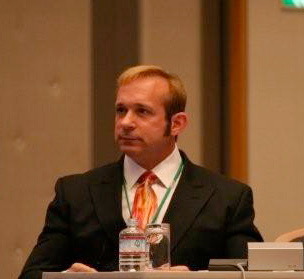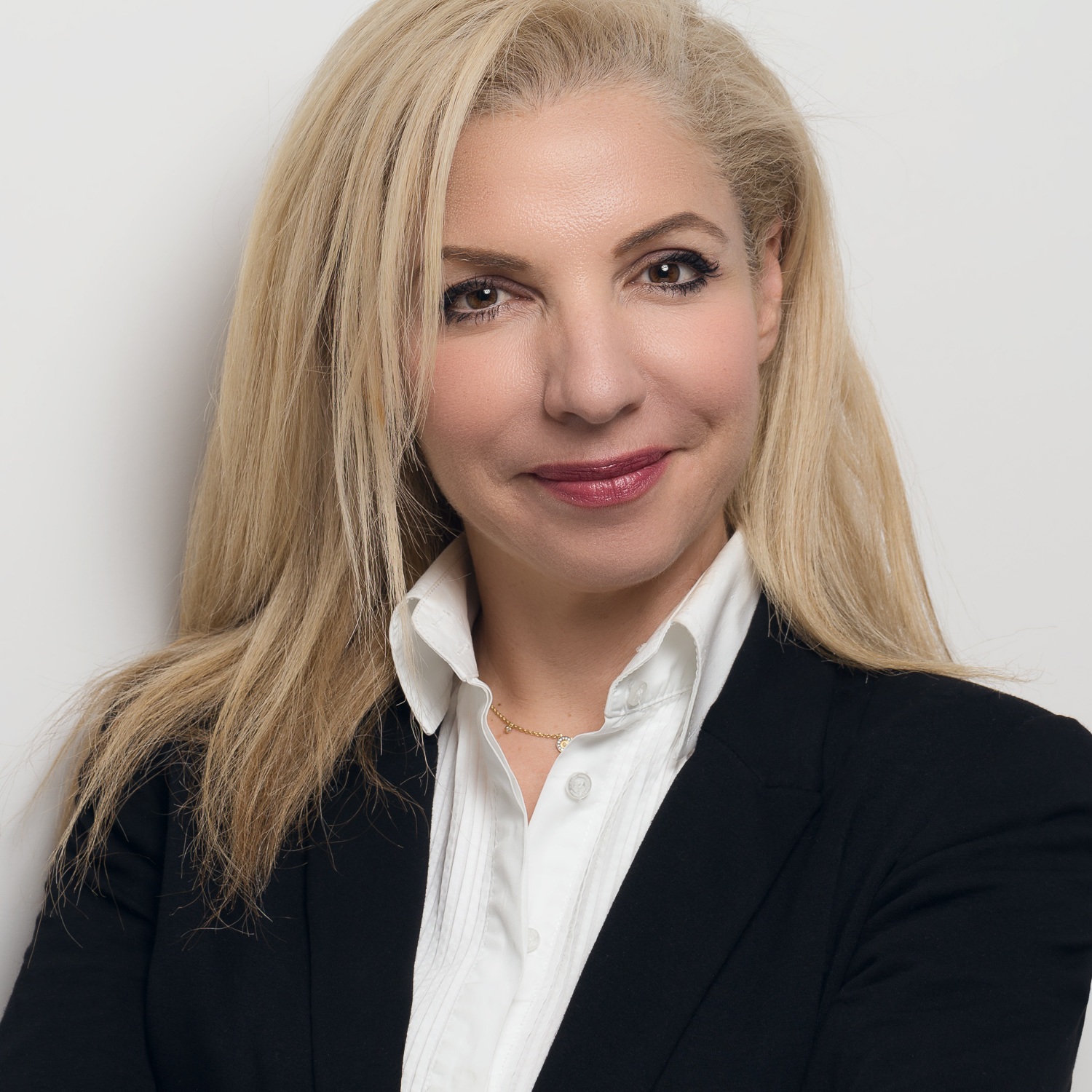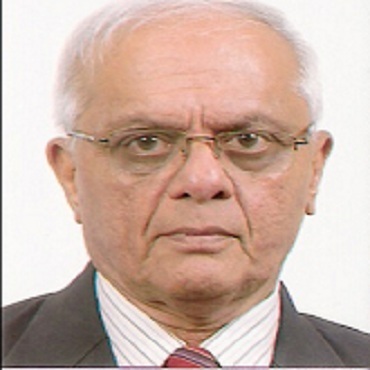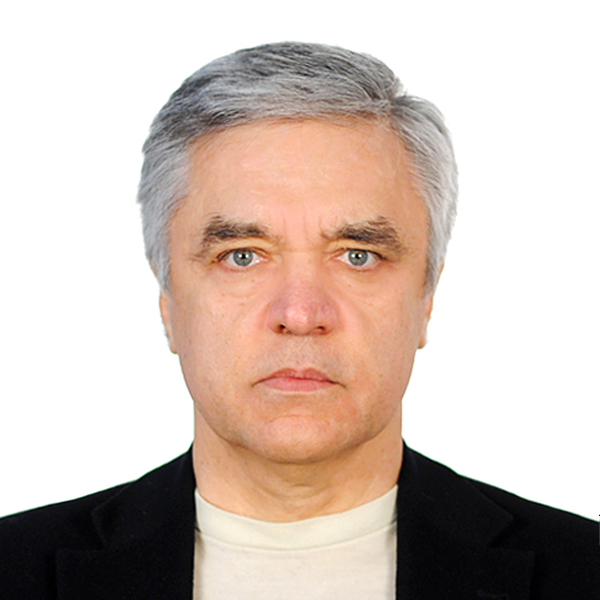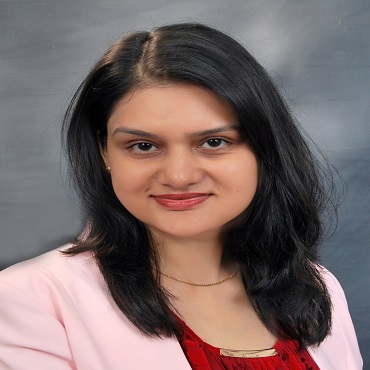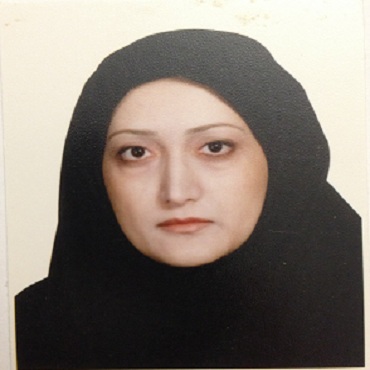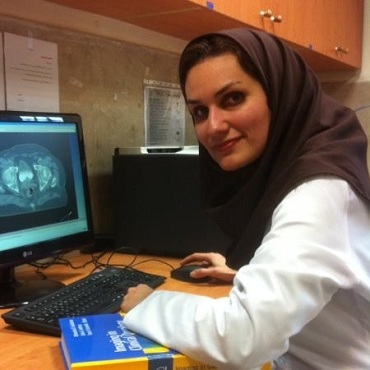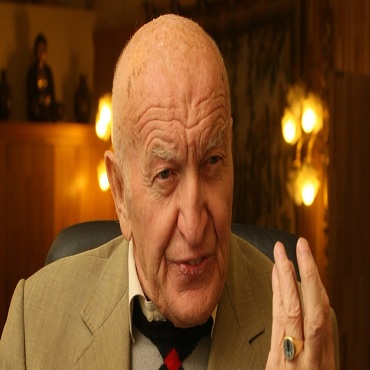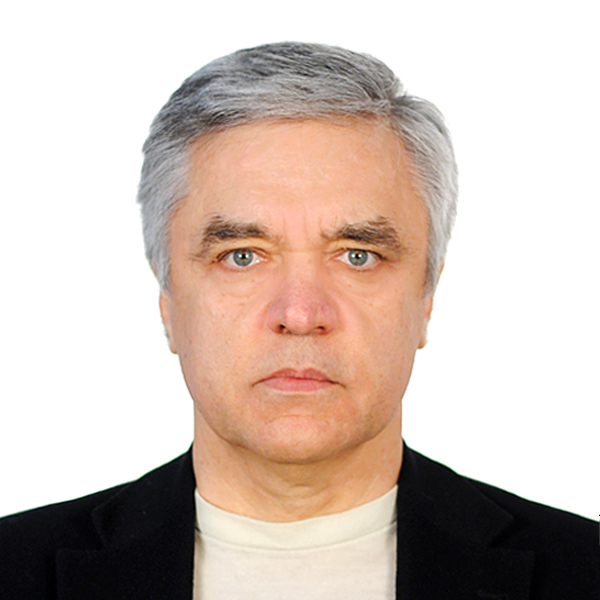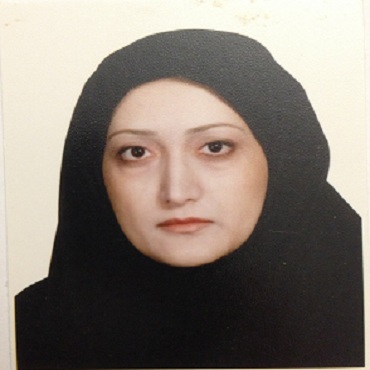Scientific Program
Keynote Session:
Title: Proton accelerated par al breast irradia on (APBI) has an excep onal pa ent sa sfac on proï¬ l
Biography:
Eric A. Strom is the Professor of Radia on Oncology, UT M.D. Anderson Cancer Center, Houston, Texas, USA. He is the senior member of the breast sec on of a group which treats over 1000 pa ents annually. He is considered as a full me clinician, his academic output has been primarily driven by issues that arise in the day-to-day treatment of pa ents with radiotherapy for their breast cancer. Author of over 175 publica ons, areas of his interest include locally advanced and locally recurrent breast cancer, integra on of reconstruc on and radia on, cardiac protec on during radiotherapy, cura ve treatment of oligometasta c breast cancer and proton APBI. As an educator in the largest radia on oncology training program in the US. He believes that the best outcomes come from a en on to the details of radia on planning and delivery. He is dual board cer ï¬ ed in both Internal Medicine and in Radiology – Radia on Oncology and a Fellow of the American College of Radiology.
Abstract:
Introduc on: Accelerated par al breast irradia on has been advocated due to its favorable schedule and targeted treatment volume. Proton-based APBI is non-invasive and dosimetrically superior to other forms of APBI in protec ng non-target structures. We reviewed our ini al experience with proton APBI to assess pa ent experience factors. Methods: 150 sequen al pa ents were treated with mul beam proton APBI on a prospec ve protocol and 141 pa ents with a minimum six month follow-up were available for pa ent reported cosmesis, quality of life and nonreimbursed personal costs. Pa ent surveys were taken at baseline, end of radia on, two weeks, six weeks, six months, and every six months therea er through three years of follow-up. Pa ent selec on ï¬ t the ASTRO consensus criteria as “acceptable” or “cau onary” for treatment with APBI. The tumorectomy cavity plus a 1.5 cm clinical target expansion was treated to 34 Gy in 10 frac ons, twice daily, over ï¬ ve day’s me as we have reported elsewhere. At the comple on of treatment, pa ents were asked to assess the impact radia on therapy treatment had on their daily life including me spent undergoing treatment, me away from work, and out-of-pocket expenses experienced during the radia on treatment. Data analysis was conducted in October 2018. Findings: At a median follow-up of 30 months (range: 6-82) all 141 pa ents are alive and there are no local recurrences. There were 74 le breast cancers treated and 67 right breast cancers
and the median age of the pa ents at the me of treatment was 68 (range: 45-85). 20 pa ents underwent wide local excision (WLE) only, 4 pa ents WLE and axillary dissec on and 117 underwent WLE and sen nel lymph node biopsy (SNLB). Histology breakdown included DCIS: 30, invasive ductal: 94, invasive lobular: 13, Mucinous: 1, papillary: 1, and carcinoma NOS: 2. The estrogen receptor was posi ve in 130/141 pa ents, nega ve: 8, and unknown: 3. Pa ent reported symptoms in the treated breast included 3 episodes of infec on, and 4 transient episodes of moderate to severe pain recorded. There were no grade 3 toxici es, speciï¬ cally no grade 3 radia on derma s. Figure 1 shows pa ent sa sfac on as a func on of me using a 5-step scale from “totally dissa sï¬ ed” to “totally sa sï¬ ed”. 139 pa ents recorded their es mated me receiving treatment with a mean of 10 hours (SD+/-4.3 hours). 135 pa ents es mated their out of pocket expenses during radiotherapy with a median of $700 and interquar le range of $100-1500. Since many pa ents do not live within commu ng distance of our facility, these expenses likely include lodging for the week of treatment. For the 43 pa ents currently employed during their treatment the median me away from work was 5 days (interquar le range 2-5).
Title: Targeted approaches of the axilla a er neoadjuvant treatment of breast cancer
Biography:
Ele heria Igna adou is a devoted breast Surgeon with great experience since 1998. One of the pioneers of modern breast surgery in Greece (sen nel lymphe node biopsy, oncoplas c surgery), she currently works as a consultant in the Breast Unit of Metaxa Memorial Hospital of Greece, the largest oncologic Hospital of Balkan. She is a member of Hellenic breast surgeons society, a member o the American college of surgeons and a member of European board of breast surgeons. She is ac ve member of many women awareness organiza ons in Greece and member of Europa Donna Founda on.
Abstract:
Statement of the Problem: The status of the axillary nodes in breast cancer remains even nowadays an important prognos c factor and a major component of treatment planning, systema c and locoregional. On the other hand in the neoadjuvant se ng, the elimina on of conï¬ rmed nodal
metastases is becoming quite o en. Thus some pa ents a er neoadjuvant treatment could be spared of unnecessary axillary dissec on and comorbidity. The purpose of this presenta on is to review systema cally the current prac ce worldwide and to present our treatment protocol and future perspec ves.
Title: Flax lignan and its mammalian lignans for breast cancer prevention, and adjunct therapy to halt metastasis
Biography:
Mahabaleshwar Hegde re red as Professor of Biochemistry, with 33 years of teaching MSc, guiding MPhil, PhD students at Pune University, and later, MPharm, MD, MS, PhD students at Bhara Vidyapeeth (Deemed to be University) Pune. Previously in his career, he took training in Molecular Biology, at Albert Einstein College of Medicine New York and appointed as Visi ng Scien st at Memorial Sloan Ke ering Cancer Centre at New York. In order to a ain much needed omega-3 nutri onal security, he developed “Flax Bio-Village Concept” for promo ng fl ax agriculture in the country, for enriching commonly consumed food egg, milk, chicken etc with omega-3 fa y acids. In order to add further value to fl ax seed, he has also focused his research and development ac vi es on isola on of fl ax lignan, for its cardioprotec ve, an -breast cancer, an -metasta c ac vi es.
Abstract:
Some cells in our body, under extreme distress condi on, somehow, manage to defeat universal law of entropy, and a ain a state of permanent order to escape death and become immortal that we call cancer. Life is order and disorder leads to disease and death. With the excessive produc on of free radicals, mul ple damage to the DNA, the cell may develop a mechanism of escaping death by becoming cancerous, a state of immortality. Cancer cells grow very fast. They manage to keep their cells in ever reducing condi on and evade telomere shortening, thereby defeat entropy in much more effi cient manner, than normal cell to a ain, a no death situa on. When the place of their origin also becomes not conducive for faster growth they metastasize to ï¬ nd a new home. Breast cancer is the most common malignant disease in women and the majority of deaths from breast cancer are due to the metastasis to other organs in the body. About 20% of breast cancer pa ents are diagnosed with a subtype of breast cancer known as triple nega ve breast cancer (TNBC). Due to lack of estrogen receptor (ER), progesterone receptor (PR), and human epidermal growth factor receptor-2 (HER2) and signiï¬ cant heterogeneity, among TNBC, no approved targeted therapies are available. There is a strong epidemiological evidence that fl ax lignan provides protec on against breast cancer. The Secoisolaricinol Digycoside (SDG), a phytoestrogen, found in fl ax seed coat is a very strong an oxidant ac vity, has cardioprotec ve and its mammalian lignan, enterolactone (EL), and has an -breast cancer and an
metasta c ac vi es. Some previous studies have shown that fl axseed can inhibit the spontaneous metastasis of the estrogen receptor nega ve (ER−) human breast cancer MDA-MB-435 cells in nude mice and the experimental lung metastasis of murine melanoma B16BL6 cells in mice. Lignans and tamoxifen (TAM), in combina on can inhibit the steps involved in the metastasis cascade. We have shown that EL exerts its an -metasta c ac vity by inhibi ng uPA-plamin MMP’s induced ECM remodelling and also by preven ng TGF β induced EMT by blocking ERK/NFkβ/snail signalling pathway(9). Our results reaffi rm the poten al of both SDG and its derived mammalian lignan EL for both an -breast cancer as well as an -metasta c ac vi es. In several human cell culture studies, EL was found to exhibit a host of ac vi es including chemopreven ve, an prolifera ve, apopto c, an metasta c, immunomodulatory, chemosensi zing and radiosensi zing in breast cancer cell lines Therefore, SDG concentrate obtainable from our Flax Biovillage concept, can be a very useful to serve as adjunct nutri onal therapy, a er chemo/ radio therapy to prevent metastasis and / or recurrence of breast cancer
Title: Platelet-rich plasma - An ‘Elixir’ for treatment of alopecia: Personal experience on 117 patients with review of literature
Biography:
Dr. Suruchi Garg Gupta is the Founder Director and Chief Consultant Dermatologist and Hair Transplant Surgeon at Aura Skin Ins tute. A scholar throughout her career, she is a board cer ï¬ ed Dermatologist from world renowned and India's premier ter ary care Postgraduate Ins tute of Medical Educa on and Research (PGIMER), Chandigarh. She spent around 6 years at this ins tute and then also worked as Senior Consultant Dermatologist and Cosmetologist at For s Hospital, Mohali.She is an interna onally trained Dermato-Laser and Hair transplant surgeon. She has taken advanced training (cer ï¬ ed) at USA, Europe and Israel and has been bestowed with many pres gious na onal and interna onal honors for her extraordinary and consistent contribu ons in the ï¬ eld of laser treatments, body contouring and Hair Transplant. Dr. Suruchi has introduced many latest laser treatments at Chandigarh, few of them being ï¬ rst in the country.
Abstract:
Platelet-rich plasma (PRP) has emerged as a new treatment modality in regenera ve plas c surgery and dermatology. PRP is a simple, cost-eff ec ve and feasible treatment op on with high pa ent sa sfac on for hair loss and can be regarded as a valuable adjuvant treatment modality for androgenic alopecia and other types of non-scarring alopecias. Authors have proposed a hair model termed “Golden anchorage with ‘molecular locking’ of ectodermal and mesenchymal components for survival and integrity of hair follicle (HF)” in
this ar cle. Golden anchorage comprises of bulge stem cells, ectodermal basement membrane and bulge por on of APM. PRP with its autologous supply of millions of growth factors works on ‘Golden anchorage’ along with kera nocytes (PDGF), dermal papilla (IGF and ï¬ broblast growth factor), vasculature (VEGF and PDGF) and neural cells (Nerve Growth Factor) in a mul pronged manner serving as an ‘elixir’ for hair growth and improving overall environment.
Title: Abzymes as unique biomarkers and targets to monitor and manage chronic disorders and to serve tools for bioengineering of the next-step genera on
Biography:
S Suchkov graduated from Astrakhan State Medical University in 1980 and was awarded with MD. In 1985, he completed PhD from I M Sechenov Moscow Medical Academy and Ins tute of Medical Enzymology. In 2001, he completed his Doctor Degree at the Na onal Ins tute of Immunology, Russia. From 1989 to 1995, he was Head of the Lab of Clinical Immunology, Helmholtz Eye Research Ins tute in Moscow. From 1995 through 2004, he is a Chair of the Dept. for Clinical Immunology, Moscow Clinical Research Ins tute (MONIKI). In 1993-1996, he was a Secretary-in-Chief of the Editorial Board, Biomedical Science, an interna onal journal published jointly by the USSR Academy of Sciences and the Royal Society of Chemistry, UK. At present, he is Professor and Chair, Department for Personalized and Transla onal Medicine, I M Sechenov First Moscow State Medical University and Department of Clinical Immunology, A I Evdokimov Moscow State Medical and Dental University. He is a member of the Editorial Boards of Open Journal of Immunology, EPMAJ, American J of Cardiovascular Research and Personalized Medicine Universe. He was the Head of the Lab of Clin Immunol at Helmholtz Eye Res Inst in Moscow from 1989 to 1995. He was a Chair in the Dept. for Clin Immunol at Moscow Reg Clin Res Inst from 1995 to 2004. He has been trained at: NIH; Wills Eye Hospital, PA, USA; University of Florida in Gainesville; UCSF, S-F, CA, USA; Johns Hopkins University, Bal more, MD, USA. He was an Execu ve Secretary-in-Chief of the Editorial Board, Biomedical Science, an interna onal journal published jointly by the USSR Academy of Sciences and the Royal Society of Chemistry, UK. At present, he is a Director of the Center for Personalized Medicine, Sechenov University and Chair in the Dept. for Transla onal Medicine at Moscow Engineering Physical Ins tute (MEPhI), Russia. He is a member of New York Academy of Sciences, USA; American Chemical Society (ACS), USA; American Heart Associa on (AHA), USA; EPMA (European Associa on for Predic ve, Preven ve and Personalized Medicine), Brussels, EU; ARVO (American Associa on for Research in Vision and Ophthalmology); ISER (Interna onal Society for Eye Research); PMC (Personalized Medicine Coali on), Washington, USA.
Abstract:
Abs against myelin basic protein (MBP), cardiac myosine (CM) and thyroid Ags (TPO, T3 and T4) endowing with proteoly c ac vity (Ab-proteases) are of great value to monitor chronic autoimmune infl amma on and to thus illustrate the evolu on of either of the above-men oned autoimmune disorders. Ab-proteases from MS, AIM and AIT pa ents exhibited speciï¬ c proteoly c cleavage of MBP, CM and thyroid Ags (T3, T3, TPO), respec vely The ac vity of the Ab-proteases markedly diff ers between: (i) the pa ents and healthy controls, and (ii) diff erent clinical courses, to to predict transforma on prior to changes of the clinical course. The ac vity of Ab-proteases was ï¬ rst registered at the subclinical stages 1-5 years (regardless to type of the disorder) prior to the clinical illness. Some (12-24%) of the direct disease-related rela ves are seroposi ve for low-ac ve Ab-proteases from which seroposi ve rela ves established
were being monitored for 2-3 years whilst demonstra ng a stable growth of the Ab-associated proteoly c ac vity. We saw also low-ac ve Ab-proteases in persons at MS-, AIM- and AIT-related risks (at the subclinical stages), and primary clinical, ultrasonic and MRT manifesta ons observed were coincided with the ac vity to have its mid-level reached. The ac vity of Ab-proteases would conï¬ rm a high subclinical and predic ve value of the transla onal tools as applicable for personalized monitoring protocols. Ab-proteases can be programmed and re-programmed to suit the needs of the body metabolism. Of tremendous value are Ab-proteases directly aff ec ng the physiologic remodeling of ssues with mul level architecture. Further studies on targeted Abmediated proteolysis may provide a supplementary tool for predic ng exacerba ons and thus the disability of the MS, AIM and AIT pa ents.
Title: Personalized and Precision Medicine as a Unique Healthcare Model through the View of Biodesign and Translational Armamentarium of the Newest Generation
Biography:
Sergey Suchkov was born in the City of Astrakhan, Russia. In 1980, graduated from Astrakhan State Medical University and was awarded with MD. In 1985, maintained his PhD at the I.M. Sechenov Moscow Medical Academy and Inst of Med Enzymology. In 2001, and then his Doctor Degree at the Nat Inst of Immunology in Russia.
From 1989 through 1995, was being a Head of the Lab of Clin Immunology, Helmholtz Eye Research Inst in Moscow. From 1995 through 2004 - a Chair of the Dept for Clin Immunology, Moscow Clin Research Institute (MONIKI). In 1993-1996, was a Secretary-in-Chief of the Editorial Board, Biomedical Science, an international journal published jointly by the USSR Academy of Sciences and the Royal Society of Chemistry, UK.
Abstract:
A new systems approach to diseased states and wellness result in a new branch in the healthcare services, namely, personalized and precision medicine (PPM). To achieve the implementation of PM concept, it is necessary to create a fundamentally new strategy based upon the subclinical recognition of biopredictors of hidden abnormalities long before the disease clinically manifests itself.
Each decision-maker values the impact of their decision to use PPM on their own budget and well-being, which may not necessarily be optimal for society as a whole. It would be extremely useful to integrate data harvesting from different databanks for applications such as prediction and personalization of further treatment to thus provide more tailored measures for the patients resulting in improved patient outcomes, reduced adverse events, and more cost effective use of health care resources. A lack of medical guidelines has been identified by the majority of responders as the predominant barrier for adoption, indicating a need for the development of best practices and guidelines to support the implementation of PPM!
Implementation of PPM requires a lot before the current model “physician-patient” could be gradually displaced by a new model “medical advisor-healthy person-at-risk”. This is the reason for developing global scientific, clinical, social, and educational projects in the area of PPM to elicit the content of the new branch.
Title: Towards a Strategic Approaches of Therapeutic Components of Bee and wasps Venoms as New Tools for Control of a Parasitoids Disease
Biography:
Professor Mamdouh Nassar was born Cairo. He graduated a bachelor’s degree from Biology (Zoology, Botany, and toxicology) Department, Faculty of Science, Cairo University. Receive his M.Sc. degree in from the same University. Ph.D degree (Channel system) between University of Maryland College Park (USA) and Cairo University. He spent many studies for field of sleeping sickness and Malaria diseases of vectors Stomoxys calcitrans and Anopheles in USDA Florida , Jazan and Jeda. Staff member program (Visitor exchange),University of Maryland College Park, USA. He is Professor of Biological Sciences at Cairo University, King Abd-Alziz, Univ. Jazan, and King Khalid Universities. Mamdouh Nassar was worked at laboratory staff, for dietary Microbiology at Environmental system service, Beltsville, USA. He also was consultant advisor at home care Company and Al-Nasr chemicals Company. Nassar is an energetic, motivating and consultant specializing in Biological science, corporate training programs and motivational learning techniques and binformatics. He was promoted to associate professor and full professor and appointed acting director of community affairs and Environment service, at Abha and Jazan City, Saudi Arabia. He appointed acting Dean Faculty of Science, Cairo University and appointed Vice Dean of postgraduate studies & Researches from 2013 to 2017. He is Author of 10 Biological Scientific books published at German Share House Lambert 2015, Introduction to invertebrates AlHandasa publisher, Jazan University, Book College of Entomology Alfagala publisher and Book of General Biology. He is currently colleagues, editorial board and evaluator of many specialty scientific Journal in USA, India, South Africa and Bulgaria, Saudi and Iraq. He indexed in Scopus, Google scholar and Researchgate citation and h-index. He spent many times through project to study control of malaria diseases vectors with Collegian in Jazan and Jedah region of King Saudi Arabia. He supervised many of graduate M.Sc. and Ph.D. Thesis of many Countries. Author and Editorial Board for many peer-review manuscripts, around world Scientific Publishers. Mamdouh Nassar has received several honors and awards from many Universities, Institute and Embassies.
Abstract:
The idea of using Bee and Wasps venom comes from a clinical observation. Beekeepers had arthritis disease, was treated with bee venom injections.
Parasitic amoeboid diseases are relentlessly progressive, affected mammals including man as a whole. Increased life expectancy has made these diseases more common worldwide. Available drugs have insufficient therapeutic effects on many parasitic diseases. Bee and Wasp venomous and their components are potential means of managing or reducing these effects and provide new alternatives for the control of parasitic diseases. These venoms and their components are well-known as sources of parasitic diseases protector. In this respect, the present study reviews our current for understanding of the mechanisms, mode of action and future prospects regarding the use of new drugs derived from Bee and wasp venom for treatment of Mice parasitic Amoeboid diseases.
The idea of using Bee and Wasps venom comes from a clinical observation. Beekeepers had arthritis disease, was treated with bee venom injections.
Parasitic amoeboid diseases are relentlessly progressive, affected mammals including man as a whole. Increased life expectancy has made these diseases more common worldwide. Available drugs have insufficient therapeutic effects on many parasitic diseases. Bee and Wasp venomous and their components are potential means of managing or reducing these effects and provide new alternatives for the control of parasitic diseases. These venoms and their components are well-known as sources of parasitic diseases protector. In this respect, the present study reviews our current for understanding of the mechanisms, mode of action and future prospects regarding the use of new drugs derived from Bee and wasp venom for treatment of Mice parasitic Amoeboid diseases.
Title: Platelet-rich plasma—an ‘Elixir’ for treatment of alopecia: personal experience on 117 patients with review of literature
Biography:
Dr. Suruchi Garg née Gupta is the Founder Director and Chief Consultant Dermatologist and Hair Transplant Surgeon at AuraSkinInstitute. A scholar throughout her career, she is a board certified Dermatologist from world renowned and India's premier tertiary care Postgraduate Institute of Medical Education and Research (PGIMER), Chandigarh. She spent around 6 years at this institute and then also worked as Senior Consultant Dermatologist and Cosmetologist at Fortis Hospital, Mohali.
She is an internationally trained Dermato-Laser and Hair transplant surgeon. She has taken advanced training (certified) at USA, Europe and Israel and has been bestowed with many prestigious national and international honors for her extraordinary and consistent contributions in the field of laser treatments, body contouring and Hair Transplant. Dr. Suruchi has introduced many latest laser treatments at Chandigarh, few of them being first in the country.
She is a passionate nutritionist and has special flair for highly skilled procedures in regenerative medicine using PRP therapy. She is using it for new skin formation for burns, scars and stretch marks; or to improve the outcome of hair transplant and non-surgical facelifts.
She has developed an innovative and breakthrough surgical treatment for Vitiligo patients and has named it as 'Laser-assisted PRP enriched epidermal suspension transplant' (LA-PEEST).
Her latest contribution is a patented protocol on non-surgical face-lift utilizing energy-based device by reposing one's own drooping facial fat planes, thus taking away or minimizing the requirement of fillers!
Dr. Suruchi Garg is the Programme Director of IADVL to train postgraduate Dermatology fellows in "Lasers and Aesthetic Dermatology". She is also a member of Board of Governors in "Centre for Excellence by Alma Lasers and Glenmark" – a prestigious laser training course.
She is also a reviewer for upcoming research articles in prestigious journals like Stem cell investigation, Journal of Cutaneous and Medical Surgery, IJDVL and IDOJ in her area of expertise. She is invited faculty for various national and international conferences of high repute. She keeps writing articles on latest innovations in Skin and Hair care in various journals and also in different daily National newspapers for public awareness and from time to time keeps educating people through Radio and Television interviews.
With an aim to reach out to the community and help the common man, she and her team regularly keeps conducting "Free Skin and Hair Camps” in and around Chandigarh.
Abstract:
Platelet-rich plasma (PRP) has emerged as a new treatment modality in regenerative plastic surgery and dermatology. PRP is a simple, cost-effective and feasible treatment option with high patient satisfaction for hair loss and can be regarded as a valuable adjuvant treatment modality for androgenic alopecia and other types of non-scarring alopecias. Authors have proposed a hair model termed “Golden anchorage with ‘molecular locking’ of ectodermal and mesenchymal components for survival and integrity of hair follicle (HF)” in this article. Golden anchorage comprises of bulge stem cells, ectodermal basement membrane and bulge portion of APM. PRP with its autologous supply of millions of growth factors works on ‘Golden anchorage’ along with keratinocytes (PDGF), dermal papilla (IGF and fibroblast growth factor), vasculature (VEGF and PDGF) and neural cells (Nerve Growth Factor) in a multipronged manner serving as an ‘elixir’ for hair growth and improving overall environment.
Keywords: Platelet-rich plasma (PRP), platelet growth factors, alopecia, androgenetic alopecia
Platelet-rich plasma (PRP) has emerged as a new treatment modality in regenerative plastic surgery and dermatology. PRP is a simple, cost-effective and feasible treatment option with high patient satisfaction for hair loss and can be regarded as a valuable adjuvant treatment modality for androgenic alopecia and other types of non-scarring alopecias. Authors have proposed a hair model termed “Golden anchorage with ‘molecular locking’ of ectodermal and mesenchymal components for survival and integrity of hair follicle (HF)” in this article. Golden anchorage comprises of bulge stem cells, ectodermal basement membrane and bulge portion of APM. PRP with its autologous supply of millions of growth factors works on ‘Golden anchorage’ along with keratinocytes (PDGF), dermal papilla (IGF and fibroblast growth factor), vasculature (VEGF and PDGF) and neural cells (Nerve Growth Factor) in a multipronged manner serving as an ‘elixir’ for hair growth and improving overall environment.
Keywords: Platelet-rich plasma (PRP), platelet growth factors, alopecia, androgenetic alopecia
Title: Direct evidence of viral infection and mitochondrial alterations in the brain of fetuses at high risk for schizophrenia
Biography:
Segundo Mesa Castillo. As Specialist in Neurology, he worked for 10 years in the Institute of Neurology of Havana, Cuba. He has worked in Electron Microscopic Studies on Schizophrenia for 32 years. He was awarded with the International Price of the Stanley Foundation Award Program and for the Professional Committee to work as a fellowship position in the Laboratory of the Central Nervous System Studies, National Institute of Neurological Diseases and Stroke under Dr. Joseph Gibbs for a period of 6 months, National Institute of Health, Bethesda, Maryland, Washington D.C. USA, June 5, 1990. At present he is member of the Scientific Board of the Psychiatric Hospital of Havana and give lectures to residents in psychiatry.
Abstract:
There is increasing evidences that favor the prenatal beginning of schizophrenia. These evidences point toward intra-uterine environmental factors that act specifically during the second pregnancy trimester producing a direct damage of the brain of the fetus [1]. The current available technology doesn't allow observing what is happening at cellular level since the human brain is not exposed to a direct analysis in that stage of the life in subjects at high risk of developing schizophrenia. Methods. In 1977 we began a direct electron microscopic research of the brain of fetuses at high risk from schizophrenic mothers in order to finding differences at cellular level in relation to controls. Results. In these studies we have observed within the nuclei of neurons the presence of complete and incomplete viral particles that reacted in positive form with antibodies to herpes simplex hominis type I [HSV1] virus, and mitochondria alterations [2]. Conclusion. The importance of these findings can have practical applications in the prevention of the illness keeping in mind its direct relation to the aetiology and physiopathology of schizophrenia. A study of the gametes or the amniotic fluid cells in women at risk of having a schizophrenic offspring is considered. Of being observed the same alterations that those observed previously in the cells of the brain of the studied foetuses, it would intend to these women in risk of having a schizophrenia descendant, previous information of the results, the voluntary medical interruption of the pregnancy or an early anti HSV1 viral treatment as preventive measure of the later development of the illness.
Oral Session 1:
- Cell Therapy Cancer cell Gene Therapy Cloning Bioprocess Allotransplantation Adoptive Cell Therapy Embryonic Stem Cell
Title: Epidemiology and histopathology of breast cancer in Iran versus other Middle Eastern Countries
Biography:
Dr Nahid Naï¬ ssi is a Breast oncoplas c Surgeon in Head of Breast department of Iran university of medical science. She is Scien ï¬ c secretary of Breast oncoplas c conference and Member of cancer research center. She published More than 70 ar cles in Breast cancer and More than 10 presenta on in interna onal European congress. She has done More than 2000 Breast cancer surgery in 15 years with registra on and follow up for research Pioneer on intra-opera ve Radiotherapy in Breast cancer surgery.
Abstract:
Background: Breast cancer is the most prevalent cancer among females worldwide. This study compares the results of the most cited published Iranian studies and studies from other Middle East countries on breast cancer with data from the Ministry of Health and Medical Educa on and approximately 2000 cases from the Cancer Research Center of Shahid Behesh Medical University of Iran. Methods: Data from the Cancer Registry System of the Ministry of Health and Medical Educa on and the Cancer Research Center were obtained in addi on to data from other published Iranian ar cles to increase the accuracy of incidence, prevalence, disease burden, risk factors, clinical staging, clinical pathology, biological markers, clinical subtypes, and survival rate of breast cancer in the last decade and compare the epidemiological data with other areas of the world. Results: Overall, breast cancer was the most common cancer in Iran. The age standardized rate for breast cancer was 33.21
per 100,000 according to the latest na onal databases. The mortality rate for breast cancer has not changed in the past 30 years in Iran. The age-standardized rate for mortality was 14.2 per 100,000 with a mean age of 49.84 years. The most common cancer in Iran is invasive ductal carcinoma. In our last review, 65.5%-70.5% of cases were in the early stages (1 and 2) and less than 30% were in the advanced stages. The ï¬ ve-year overall survival rate was es mated at 72% in women and 60% in men. The stage and number of posi ve lymph nodes signiï¬ cantly aff ected the survival rate. In the Gulf Coopera on Council, ASR of the Kingdom of Saudi Arabia was (12.9), Bahrain (46.4), Kuwait (44.3), Qatar (35.5), United Arab Emirates (19.2), and Oman (14.4) per 100,000. Conclusion: Our study shows that epidemiology and histopathology of cancer is Diff erent with other neighborhood countries and is mul -dimension and needs mul center involvement from government authori es, clinicians and scien sts.
Title: Fluidic Analysis of milk channel in female breast with the help of ANSYS Fluent
Biography:
Muhammad Javaid Afzal has his exper se in experimenta on and simula on so ware (ANSYS and MATLAB) and their use in biomedical engineering for evalua on and passion in improving the health and wellbeing. His open and contextual simula on so ware based on responsive construc vists creates new pathways for improving healthcare. This approach is responsive to all stakeholders and has a diff erent way of focusing
Abstract:
Female breast reaches its complete prac cal capability through lacta on with the milk produc on. There must be understanding of breast physiology and its anatomy to analyze the problems of breas eed that ascend in lacta on. Breast cancer (B.C) is the most communal invasive cancer in females and actually the leading reason of cancer. The progresses in screening and treatment have been established and the survival rates have been drama cally increased. There are three million females with the indica on of breast cancer in America only. The chance of death from breast cancer
is approximately one in forty. In breast there are ny ducts (fl uidic channels) which transport milk to the breast nipple. There is con nuously increased resistance in the supply of milk. The resistance can be due to the cancer which generally starts with internal lining of milk tubes that supply milk. Supply of milk is gradually decreased due to the developed lumps and squeezing of milk channels in female breasts. In this research the resistance in supplying milk is analyzed with the help of ANSYS Fluent.
Title: Pathological response predictors in neoadjuvant breast cancer, A report of Iran
Biography:
M Malekzadeh Moghani is an Assistant Professor at Shahid Behesh University of Medical Sciences (SBMU). He and his coworkers are working at Shohada hospital, which is one of the main referral centers of Tehran for this current research. He is the Head of Educa onal methods commi ee of EDO, SBMU, and the Collaborator in Cancer Research Center at SBMU in research and fellowship training. He also serves as the Head of Interna onal commi ee of Iranian society of Radia on oncologist, Co-partner in Advisory board of Breast cancer and cervical cancer, and the Member of na onal oncologic guidelines commi ee in Health ministry.
Abstract:
Statement of problem: Breast cancer in Iran like other parts of the world is the ï¬ rst cancer in women; one of the classiï¬ ca ons is locally advance breast cancer (LABC) which despite improvements in treatment remains mostly incurable. All a empts now are to change what aff ects this issue. Neoadjuvant chemotherapy and pathologic complete response (pCR) is a goal in short me, which can predict treatment outcomes. The aim of this ar cle is to assess factors that infl uence pCR. Methodology: 214 breast cancer pa ents who received neoadjuvant chemotherapy in Tehran, Shohada hospital (one of breast cancer research center and referral hospital) during 2011 to 2017, were evaluated. The treatment regimen was consis ng of Antracyclin, taxane (plus trastusumab base on considera on of HER2/neu receptor). Diff erent variables; tumor characteris cs (appearance and size), and pa ents’ demographic data were evaluated. Sta s cal analysis was performed.
Findings: 214 of 2665 pa ents were LABC, with median age of 47.7, 40.4 % were advance stage and 38 % had pathologic grade 3. Finally 33.3 % achieved pCR; pCR was no signiï¬ cantly higher in posi ve history of pregnancy(78%) than pa ents without history of complete pregnancy(65%) (p=.024). There is a higher trend in stage II pa ents,63% in comparison to 46% in stage III,(p=.048), 65% in tumor by clinical size of smaller than 5 cm compare to 52% in larger mass (p=.038), pCR reported to be 75% in sample without lymphovascular invasion (LVI) but only 39% in posi ve LVI (p=.02), 87% in higher Ki67 index compare to 68% in sample with Ki67 percentage less than 10 (p=.067) and the signiï¬ cant diff erence was found in triple nega ve tumors,50% in comparison to 35% pCR in other group (p=.005). Conclusion and signiï¬ cance: We observe more occurrence of pCR in small, triple nega ve breast cancer without LVI. However the study was retrograde and we hope that in prospec ve future evalua on could iden fy other items.
Title: A colored CAD system for breast mammography
Biography:
Maha A Elhady Almona Ali has her exper se and passion in improving the mammograms reading. Her algorithm creates new pathways for improving women healthcare and save their lives. She has developed this algorithm a er years of experience in research, applied her algorithms on mammograms from sites for scien ï¬ c researches and mammograms from hospitals. The algorithm is based on wavelet decomposi on technique which is a powerful tool for image analysis.
Abstract:
Breast Cancer is the most common and life threatening cancer among women. Mammography is the process of using lowenergy X-rays to examine the human breast. It is one of the best examina on procedures for early detec on of breast cancer. Mammograms are the most diffi cult of radiological images to interpret since they are of low contrast. Radiologists typically diagnose breast abnormali es and indicate their regions from mammograms. Some mes due to small masses or breast density radiologists may miss the suspicious regions, so the diagnosis can fail. Therefore, eff orts in developing Computer Aided Detec on/Diagnosis (CAD) algorithms for mammogram analysis will assist radiologist in images interpreta on for accurate diagnosis and effi cient detec on of cancer cells in the earlier stages. This study developed an algorithm to analyze mammograms automa cally with colors, in order to detect the abnormal breast ssue. It proposed the use of the Discrete Wavelet Decomposi on (DWD) technique using symlet wavelet to ï¬ nd out this detec on. Diff erent sets of proposed combina on techniques based on the DWD technique were used in order to obtain the best accuracy in breast ssues classiï¬ ca on. The study showed that the combina on between the un-decimated DWD technique and the Spa al Gray Level Dependency Matrix (SGLDM) achieved
the best result. It achieved 98.8% accuracy, 95.0% sensi vity. This accuracy has been veriï¬ ed with the ground truth given in the mini-MIAS database. This algorithm will help to spare women unnecessary and stressful biopsies.
Title: Breast cancer: Ruqya and nega ve ions treatment
Biography:
Dr Mira Bajirova, Associate Professor, Consultant IVF, Ob-Gyn from Paris, France. Born in Kazakhstan, moved to Moscow for Medical Studies and Scien ï¬ c studies, PhD. A er spending 13 years in Moscow, moved to Paris in 1989. Medical and PhD were not recognized. New language. Started from the cleaner job, then caregiver, then studied to obtain the nurse Diploma and entered to the Paris University and a er studying again 13 years, obtained 9 French Diplomas and Cer ï¬ cates. In Total 14 University diplomas and Cer ï¬ cates. In France worked with Prof Frydman who did the 2nd IVF in the World, with Prof Pouly, French IVF Society President. On the Na onal Compe on on the Country level in 2001 to become Assistant Professor was on 2nd place. Did Na onal Scien ï¬ c Study: ICSI and Children, which was preselected for European Award by ESHRE in 2001 and orally presented in Lausanne, Switzerland. Special interest in Alterna ve treatment by Nega ve Ions since 2010. Miraculous eff ects of the Nega ve Ions on Female and Male Infer lity, Premature Menopause, Infec ons, Cervical Dysplasia and even Cancer were published in 2017 and 2018 in Interna onal Journals. 35 publica ons, 6 Oral presenta ons, Interna onal experience: USA, UK, China, Vietnam, Russia, Kazakhstan, Pakistan, Kuwait, United Arab Emirates. Interested by Allah’s Treatment: Ruqya and Nega ve Ions. Last presenta on as an Interna onal Speaker in Japan.
Abstract:
The causes of Breast Cancer (and almost of all diseases) are Decreased Oxygen U liza on and Jinn. Decreased Oxygen U liza on is induced by Posi ve Ions, everything man-made. The Nega ve Ions are the best against Posi ve Ions. Posi ve Ions cause acidosis and hypoxia, infl amma on inducing consequently the diseases. The Nega ve Ions are abundant in the clean nature (rain, waterfall, sea, forest) and there are many Nega ve Ions products. Allah says: “(Remember) when
He overwhelmed you with drowsiness (giving) security from Him and sent down upon you from the sky, rain by which to purify you and remove from you the evil (sugges ons) of Satan and to make steadfast your hearts and plant ï¬ rmly thereby your feet.” (Quran, Al-Anfal 8:11). Ruqya is a cure from Allah for all diseases. “Allah has not sent down any disease but He has also sent down the cure; the one who knows it, knows it and the one who does not know it, does not know it”.
Title: Towards a strategic approaches of therapeu c components of bee and wasps venoms as new tools for control of a parasitoids disease
Biography:
Professor Mamdouh Nassar was born Cairo. He graduated a bacheloras degree from Biology (Zoology, Botany, and toxicology) Department, Faculty of Science, Cairo University. Receive his M.Sc. degree in from the same University. Ph.D degree (Channel system) between University of Maryland College Park (USA) and Cairo University. He spent many studies for ï¬ eld of sleeping sickness and Malaria diseases of vectors Stomoxys calcitrans and Anopheles in USDA Florida , Jazan and Jeda. Staff member program (Visitor exchange),University of Maryland College Park, USA. He is Professor of Biological Sciences at Cairo University, King Abd-Alziz, Univ. Jazan, and King Khalid Universi es. Mamdouh Nassar was worked at laboratory staff , for dietary Microbiology at Environmental system service, Beltsville, USA. He also was consultant advisor at home care Company and Al-Nasr chemicals Company. Nassar is an energe c, mo va ng and consultant specializing in Biological science, corporate training programs and mo va onal learning techniques and binforma cs. He was promoted to associate professor and full professor and appointed ac ng director of community aff airs and Environment service, at Abha and Jazan City, Saudi Arabia. He appointed ac ng Dean Faculty of Science, Cairo University and appointed Vice Dean of postgraduate studies & Researches from 2013 to 2017. He is Author of 10 Biological Scien ï¬ c books published at German Share House Lambert 2015, Introduc on to invertebrates AlHandasa publisher, Jazan University, Book College of Entomology Alfagala publisher and Book of General Biology. He is currently colleagues, editorial board and evaluator of many specialty scien ï¬ c Journal in USA, India, South Africa and Bulgaria, Saudi and Iraq. He indexed in Scopus, Google scholar and Researchgate cita on and h-index. He spent many mes through project to study control of malaria diseases vectors with Collegian in Jazan and Jedah region of King Saudi Arabia. He supervised many of graduate M.Sc. and Ph.D. Thesis of many Countries. Author and Editorial Board for many peer-review manuscripts, around world Scien ï¬ c Publishers. Mamdouh Nassar has received several honors and awards from many Universi es, Ins tute and Embassies.
Abstract:
The idea of using Bee and Wasps venom comes from a clinical observa on. Beekeepers had arthri s disease, was treated with bee venom injec ons. Parasi c amoeboid diseases are relentlessly progressive, aff ected mammals including man as a whole. Increased life expectancy has made these diseases more common worldwide. Available drugs have insuffi cient therapeu c eff ects on many parasi c diseases. Bee and Wasp venomous and their components are poten al
means of managing or reducing these eff ects and provide new alterna ves for the control of parasi c diseases. These venoms and their components are well-known as sources of parasi c diseases protector. In this respect, the present study reviews our current for understanding of the mechanisms, mode of ac on and future prospects regarding the use of new drugs derived from Bee and wasp venom for treatment of Mice parasi c Amoeboid diseases.
Title: Eff ect of the an -cancer prepara on NSC-631570 (UKRAIN) on malignant melanoma
Biography:
Wassil Nowicky is the Director of “Nowicky Pharma” and President of the Ukrainian An -Cancer Ins tute (Vienna, Austria). He is the inventor of the an -cancer prepara on on the basis of celandine alkaloids “NSC-631570”. He is an author of over 300 scien ï¬ c ar cles dedicated to cancer research. He is a real member of the New York Academy of Sciences, member of the European Union for applied immunology and of the American Associa on for scien ï¬ c progress, honorary doctor of the Janka Kupala University in Hrodno, doctor “honoris causa” of the Open interna onal university on complex medicine in Colombo, honorary member of the Austrian Society of a name of Albert Schweizer. He has received the award for merits of Na onal guild of pharmacists of America, the award of Austrian Society of sanitary, hygiene and public health services and others.
Abstract:
In a series of ar cles the researchers have studied the eff ect of NSC-631570 on various parameters in breast cancer pa ents. Best results were achieved with higher dosage of NSC-631570. Almost every pa ent noted the improvement of the general well-being, sleep and appe te. During the surgery, the tumors as well as involved lymph nodes were presented sclero c and well demarcated from the surrounding ssue. This alleviated the surgical removal of the tumor considerably. In the tumor ssue, increased concentra on of the amino acid proline was revealed indica ng augmented produc on of connec ve ssue that 16 demarcate the tumor from surrounding ssue. NSC-631570 improved also the amino acid balance of pa ents.
A recent in vitro study with murine and human cancer cell lines conï¬ rmed these good results in the treatment of breast cancer were not accidental. The researchers from Emory University (Atlanta, Georgia, USA) and Kennesaw State University (Kennesaw, Georgia, USA) concluded: “The an cancer drug Ukrain exerts its cytotoxic eff ects on both mouse and human breast cancer cell lines in a dose and me dependent manner. Weeks following Ukrain treatment, cells maintained a reduced capacity to proliferate. Our data suggest that Ukrain could be eff ec ve as an an cancer drug for breast cancer due to its short term and long term inhibitory eff ects on tumor cell viability and prolifera on.”
Title: Percutaneous vacuum assisted complete exeresis guided by ultrasound of high risk lessions
Biography:
Elisabeth Sanabria is radiologist who has her exper se in breast management by a ending the Master of breast pathology and senology in University of Barcelona. She has been in charge of breast diagnosis and interven ons in the Valencian oncology Ins tute where she spent many years with dedica on and passion on her daily work. Her methodology consisted in one visit – full personalized procedural a endance for each pa ent, with no recalling and no wai ng list, Mul disciplinary interac on and Clinical-radio-pathological correla on.
Abstract:
Statement of the Problem: Women who have high risk lesions use to go on surgery being over treated or otherwise go through ac ve follow-up going underes ma on of malignant lesions. Lately a new op on has appeared for these cases off ering the reduc on of sub es ma on up to 0% and no overtreatment with neither physiological nor aesthe c impact in the life of these pa ents. The purpose of this study is to describe the technique and experience of this emerging indica on of the well-known breast vacuum assisted biopsy method. Methodology & Theore cal Orienta on: A percutaneous biopsy device vacuum assisted device (EncorUltra®) was used for the complete exeresis of the lessions. Ultrasound Toshiba Aplio 300 was the guidance equipment. Normal an sep c care were taken, 20ml lidocaine hydrochloride with 2% epinephrine was administered with 8mm large spine needle local injec on surrounding the whole lesion. Needles device used were 7G and 10G diameter. The complete excision was the prime objec ve, the excision of surrounded ssues was secondary aim. Once the procedure ended three sterile tryp were located in the minimal entrance scar and local compression has being done during 20 minutes. A corsse e compressive bandage was performed in all cases and kept for 12hours. Clinical and ultrasound surveillance was performed 24 hours, 1 week, 6 months and yearly a er that. Results: 16 cases were done since April 2014 to April 2018. Complete resec on was performed in all cases but one (6,2%) which was core biopsy underes ma on with pathological result of esclerosant adenosis while a er VABB AP found milimetrical area of ductal invasive carcinoma. Thus, it went to conserva ve
surgery where the only ï¬ nding where to puntacte microfocus of microinvasive carcinomas in the margins le . Most lessions where: hyperplasia of columnal cells (12,5%), atypical ductal hyperplasia (68,7%), fl orid ductal hyperplasia (6,2%), epithelial prolifera ve lesion(6,2%), papillary lesion(18,7%), classical lobular neoplasia LIN1(6,2%), ï¬ brocys c changes (37,5%), eleven were complex lesion with more than one histological ï¬ nding (68,7) and one pa ent (6,2%) diagnosed by FNAC of breast carcinoma and ï¬ nally diagnosed of B3 lesion with VABB complete resec on. Conclusions: Preliminary outcomes are very enthusias c. Nevertheless, we are including pa ents in an interna onal mul centric study ongoing trial as further studies are impera ve.
Title: Abzymes as unique biomarkers and targets to monitor and manage chronic disorders and to serve tools for bioengineering of the next-step generation
Biography:
Sergey Suchkov was born in the City of Astrakhan, Russia, in a family of dynasty medical doctors. In 1980, graduated from Astrakhan State Medical University and was awarded with MD. In 1985, Suchkov maintained his PhD as a PhD student of the I.M. Sechenov Moscow Medical Academy and Institute of Medical Enzymology. In 2001, Suchkov maintained his Doctor Degree at the National Institute of Immunology, Russia.
From 1989 through 1995, Dr Suchkov was being a Head of the Lab of Clinical Immunology and Immunobiotechnology, Helmholtz Eye Research Institute in Moscow. From 1995 through 2004 - a Chair of the Dept for Clinical Immunology, Moscow Clinical Research Institute (MONIKI). In 1993-1996, Dr Suchkov was a Secretary-in-Chief of the Editorial Board, Biomedical Science, an international journal published jointly by the USSR Academy of Sciences and the Royal Society of Chemistry, UK.
Abstract:
Abs against myelin basic protein (MBP), cardiac myosine (CM) and thyroid Ags (TPO, T3 and T4) endowing with proteolytic activity (Ab-proteases) are of great value to monitor chronic autoimmune inflammation and to thus illustrate the evolution of either of the above-mentioned autoimmune disorders. Ab-proteases from MS, AIM and AIT patients exhibited specific proteolytic cleavage of MBP, CM and thyroid Ags (T3, T3, TPO), respectively The activity of the Ab-proteases markedly differs between: (i) the patients and healthy controls, and (ii) different clinical courses, to to predict transformation prior to changes of the clinical course.
The activity of Ab-proteases was first registered at the subclinical stages 1-5 years (regardless to type of the disorder) prior to the clinical illness. Some (12-24%) of the direct disease-related relatives are seropositive for low-active Ab-proteases from which seropositive relatives established were being monitored for 2-3 years whilst demonstrating a stable growth of the Ab-associated proteolytic activity. We saw also low-active Ab-proteases in persons at MS-, AIM- and AIT-related risks (at the subclinical stages), and primary clinical, ultrasonic and MRT manifestations observed were coincided with the activity to have its mid-level reached. The activity of Ab-proteases would confirm a high subclinical and predictive value of the translational tools as applicable for personalized monitoring protocols. Ab-proteases can be programmed and re-programmed to suit the needs of the body metabolism. Of tremendous value are Ab-proteases directly affecting the physiologic remodeling of tissues with multilevel architecture. Further studies on targeted Ab-mediated proteolysis may provide a supplementary tool for predicting exacerbations and thus the disability of the MS, AIM and AIT patients.
Title: Therapeutic effects of combinatorial biologics (mRNA and allogenic MSCs) with a spinal cord stimulation system on a patient with spinal cord section. Dr Joel
Biography:
Dr. Dr. Osorio is an innovative businessman with a distinct entrepreneurial mindset concentrated adding value on areas of Biotechnology
(mRNA), Reprogramming & Regenerative Medicine for translational use in humans and a variety of clinical applications aimed for both the
private and the public health sectors. Dr. Osorio is the Founder, President, and CEO of RegenerAge Clinic and RegenerAge Beauty initiatives
for transnational implementations. Vice President and International Clinical Developer for Bioquark, Inc. Executive Vice President: Chairman of
the WAMS Americas Division, member of the WAMS Executive Council (WAMS Executive Board), a member of the WAMS Education &
Training Board (ETB), a member of the WAMS Editorial Board, an Honorary Member of the Academy Faculty FWAMS, an Honorary Fellow of
the Academy & is also a Senior Partner at WAMS, The World Academy of Medical Sciences.
Abstract:
Bioquantine® a mRNA extract from Xenopus laevis frog oocytes
(purified from intra- and extra-oocyte liquid phases of electroporated
oocytes), showed potential as a treatment for a wide range of conditions
in animal models, including Spinal Cord Injury (SCI) and Traumatic
Brain Injuries (TBI) among others. The current study observed
beneficial changes with Bioquantine® administration in a patient with a
severe SCI. Pluripotent stem cells have therapeutic and regenerative
potential in clinical situations CNS disorders. One method of
reprogramming somatic cells into pluripotent stem cells is to expose
them to extracts prepared from Xenopus laevis oocytes. Due to ethical
reasons and legal restrictions we selected a No Option patient, deciding
to include in our protocol the RestoreSensor SureScan to complete it.
Based on the electrical stimulation for rehabilitation and regeneration
after spinal cord injury published by Hamid and MacEwan, we designed
an improved delivery method for the in-situ application of MSCs and
Bioquantine® in combination with the RestoreSensor® SureScan®.
To the present day the patient who suffered a complete section of spinal
cord at T12-L1 shows an improvement in sensitivity, strength in striated
muscle and smooth muscle connection, 14 months after the first
Bioquantine® and MSCs treatment and 9 months after the placement
of RestoreSensor® at the level of the lesion, showing an evident
improvement on his therapy of physical rehabilitation (legs movement)
on crawling forward and backwards and standing on his feet for the first
time and showing a progressively important functionality on both limbs.
Title: Molecular study for Metabolic Liver Diseases
Biography:
Emna Barkaoui: obtained Pediatric Diploma from Rene Descartes University of Paris V France, Pediatric Hepatology and Gastroenterology Diploma from Angers France, with expertise in pediatric hepatology, and liver metabolic disease, responsible of the pediatric unity, responsible of the pediatric liver transplantation program, member of comity of liver transplantation in Health Ministry, associated member of the Cellular and Molecular Hematology Laboratory in Pasteur Institute of Tunis, Tunisia, Researcher working on hereditary cholestasis, Glycogenosis type I and Hereditary Tyrosinemia type I, member of Groupe Francophone de Gastroenterologie Hepatologie et Nutrition Pediatrique, Member of MEMG, Magrebian Pediatric Research Award 2006, Poster Award in MEMG 2016, and teaching in hospital.
Abstract:
From 2002 to 2016 we studied three diseases glycogenosis storage disaese type Ia (22 Tunisisan cases), progressive intrahepatic cholestasis with normal gammaglutamyl transferasis (13, Tunisian and Libyan cases) and NPC 1(5 Libyan cases).
The Molecular study was done in Tunisian laboratory for GSD using PCR and direct squencing of the G6PC gene and the 2 genes ATP8B1 and ABCB11 for PFIC, and by Centogen laboratory for Nieman Pick C patients. We used for the first time the splicing Finder Program and Ex-Skip program for the analysis of intronic variants in PFIC patients.
Results : For GSD type Ia : 2 recurrent mutations the R83C and R170Q were found in 90% of patients. For PFIC with normal gammaglutamyltransferase : For ATP8B1, we found Nine exonic mutations, four of them novels and seven novel intronic. For ABCB11, we found three exonic mutations with two novels and two novel intronic mutations.
Discussion : Our study were the first in Tunisia and North Africa for these diseases. For GSD type Ia the R83C and R170Q mutations were found in more than 90% of patients and show a possible founder effect. For PFIC the results are heterogene but 2 patients had Y354X and dropped their alphafoetoproteine hepatocarcinoma was confirmed in One, both had a liver transplantation (respectively at age of 6 months and 3 years). For NPC1 we found 3 novel mutations type encompassing in two patients, a multiple copies of two exons in one patient and a missens mutation .
Title: Ab initio Systematic Parametrization of Polarizable Force Field Quantum Chemistry mechanics-based free energy perturbation methods for calculating relative solvation free energies of a Novel Supramolecular Nano - Ligand (NoSuNoLin) targeted to the Nuclear autoantigen Sp - 100, sp | P23497 | 568-592, KRWQQRGRKANTRPLKRRRKRGPRI, P23497 Slim regions for the regulation of the ETS1, CASP8AP2 and FAS-mediated apoptosis.
Biography:
Ioannis Grigoriadis has completed his PharmacistD at the age of 24 years from Aristotle University of Thessaloniki. He is the scientific director of Biogenea
Pharmaceuticals Ltd, a premier biotechnology personalized cancer vaccination service organization. He has published more than 20 papers in reputed journals and
has been serving as an editorial board member of reputeon the collection, processing, cryopreservation and cGMP (according to Good Manufacturing Practice)
production -for solely autologous use - of cellular therapeutical solutions from blood (bone marrow, peripheral blood, cord blood) or blood compounds for human use
-on stem cell expansion technologies, which were created in the research laboratories ofNASA (National Aeronautics and Space Administration) - on the cGMP
production of advanced medicinal products (1394/2007/ΕC) for solely autologous use from skin, dental pulp, cord tissue). (In preclinical-research phase: 2008-2009)
- on certified genetic analyses in collaboration with International Referral Centers -on copyright protection according to the American and/or European Copyright Agency
Abstract:
Free energy perturbation (FEP) ab initio quantum mechanics (QM) methods were developed for
treating the solute molecules and molecular mechanics (MM) for treating the surroundings. Like
earlier results using AM1 semi empirical QMs, the ab initio QM/MM-based FEP method was
shown to accurately calculate relative solvation free energies for a diverse set of small
molecules that differ significantly in structure, aromaticity, hydrogen bonding potential, and
electron density. Accuracy was similar to or better than conventional FEP methods. Together
with PML, Nuclear autoantigen Sp-100 tumor suppressor is a major constituent of the PML
bodies, a subnuclear organelle involved in a large number of physiological processes including
cell growth, differentiation and apoptosis. Functions as a transcriptional coactivator of ETS1 and
ETS2 according to PubMed:11909962. Under certain conditions, it may also act as a
corepressor of ETS1 preventing its binding to DNA according to PubMed:15247905. Through
the regulation of ETS1 it may play a role in angiogenesis, controlling endothelial cell motility and
invasion. Through interaction with the MRN complex it may be involved in the regulation of
telomeres lengthening. May also regulate TP53-mediated transcription and through CASP8AP2,
regulate FAS-mediated apoptosis. Also plays a role in infection by viruses, including human
cytomegalovirus and Epstein-Barr virus, through mechanisms that may involve chromatin and/or
transcriptional regulation. The QM/MM-based methods eliminate the need for time-consuming
development of MM force field parameters, which are frequently required for drug-like molecules
containing structural motifs not adequately described by MM. Future automation of the method
and parallelization of the code for Linux 128/256/512 clusters is expected to enhance the speed
and increase its use for drug design and lead optimization. We introduce Glybatomaq, an
Ab initio Systematic Parametrization of Polarizable Force Fields from Quantum Chemistry
mechanics-based free energy perturbation method for calculating relative solvation free
energies for systematic force field optimization with the ability to parametrize a wide variety of
functional forms using flexible combinations of reference data. We outline several important
challenges in force field development and how they are addressed in ForceBalance, and
present an example calculation where these methods are applied to develop a highly accurate
polarizable novel Nano-ligand targeted to the Nuclear autoantigen Sp-100, sp|P23497|568-592,
KRWQQRGRKANTRPLKRRRKRGPRI, P23497
playing a role in angiogenesis, controlling endothelial
cell motility and invasion through the regulation of the
ETS1, CASP8AP2 and FAS-mediated apoptosis
Title: Different concentrations of nitric oxide changed the histone deacetylase 2 gene expression and activity of glutathione p eroxidase
Biography:
Nazanin Haghighat has completed her PhD at the age of 29 years from department of biophysics,Tarbiat Modares University, Iran. She has published 3 papers in reputed journals. She is teachingbiochemistry, biochemistry-physics and stem cell biology in Semnan University, Iran.
Abstract:
Nitric oxide (NO) is a two atom free radical that plays an important role as a secondary messenger in cell physiological functions and change of its value influences proteins activity and triggering intracellular signaling cascades. Low frequency electromagnetic field (EMF) by targeting the plasma membrane as well as entering force to the ions and small electrical ligands alters the cell biology such as cell differentiation. One way of protein activity regulation is post translation modifications that changes structure and function of proteins. Nitric oxide is a signaling molecule in cells that high concentration of this free radical modifies proteins after the translation. NO binds to tyrosine and cysteine residues and influence on the enzyme activity and following that cell fate. In this study effect of high and low concentrations of NO and electromagnetic field as physical inducer were investigated on the histone deacetylase 2 (HDAC2) gene expression and glutathione peroxidase (GPx) enzyme activity in rat bone marrow mesenchymal stem cells. The cell viability examined in different concentrations of nitric oxide too. The results showed high and low concentrations of NO and EMF alter the gene expression of HDAC2 differently than the control group. NO decreases the activity of GPx. Reduction ofcell viability by high concentration of NO attended with the decreased gene expression of HDAC2 and GPx activity, preview important role of NO in cell physiology and fate. NO in high concentration can lead apoptosis and cause to differentiate the stem cells.
Keynote Session:
Title: Personalized and precision medicine as a unique healthcare model through the view of biodesign and transla onal armamentarium of the newest genera on
Biography:
S Suchkov graduated from Astrakhan State Medical University in 1980 and was awarded with MD. In 1985, he completed PhD from I M Sechenov Moscow Medical Academy and Ins tute of Medical Enzymology. In 2001, he completed his Doctor Degree at the Na onal Ins tute of Immunology, Russia. From 1989 to 1995, he was Head of the Lab of Clinical Immunology, Helmholtz Eye Research Ins tute in Moscow. From 1995 through 2004, he is a Chair of the Dept. for Clinical Immunology, Moscow Clinical Research Ins tute (MONIKI). In 1993-1996, he was a Secretary-in-Chief of the Editorial Board, Biomedical Science, an interna onal journal published jointly by the USSR Academy of Sciences and the Royal Society of Chemistry, UK. At present, he is Professor and Chair, Department for Personalized and Transla onal Medicine, I M Sechenov First Moscow State Medical University and Department of Clinical Immunology, A I Evdokimov Moscow State Medical and Dental University. He is a member of the Editorial Boards of Open Journal of Immunology, EPMAJ, American J of Cardiovascular Research and Personalized Medicine Universe. He was the Head of the Lab of Clin Immunol at Helmholtz Eye Res Inst in Moscow from 1989 to 1995. He was a Chair in the Dept. for Clin Immunol at Moscow Reg Clin Res Inst from 1995 to 2004. He has been trained at: NIH; Wills Eye Hospital, PA, USA; University of Florida in Gainesville; UCSF, S-F, CA, USA; Johns Hopkins University, Bal more, MD, USA. He was an Execu ve Secretary-in-Chief of the Editorial Board, Biomedical Science, an interna onal journal published jointly by the USSR Academy of Sciences and the Royal Society of Chemistry, UK. At present, he is a Director of the Center for Personalized Medicine, Sechenov University and Chair in the Dept. for Transla onal Medicine at Moscow Engineering Physical Ins tute (MEPhI), Russia. He is a member of New York Academy of Sciences, USA; American Chemical Society (ACS), USA; American Heart Associa on (AHA), USA; EPMA (European Associa on for Predic ve, Preven ve and Personalized Medicine), Brussels, EU; ARVO (American Associa on for Research in Vision and Ophthalmology); ISER (Interna onal Society for Eye Research); PMC (Personalized Medicine Coali on), Washington, USA
Abstract:
A new systems approach to diseased states and wellness result in a new branch in the healthcare services, namely, personalized and precision medicine (PPM). To achieve the implementa on of PM concept, it is necessary to create a fundamentally new strategy based upon the subclinical recogni on of biopredictors of hidden abnormali es long before the disease clinically manifests itself. Each decisionmaker values the impact of their decision to use PPM on their own budget and well-being, which may not necessarily be op mal for society as a whole. It would be extremely useful to integrate data harves ng from diff erent databanks for applica ons such as predic on and personaliza on of further treatment to thus provide more tailored measures for the
pa ents resul ng in improved pa ent outcomes, reduced adverse events, and more cost eff ec ve use of health care resources. A lack of medical guidelines has been iden ï¬ ed by the majority of responders as the predominant barrier for adop on, indica ng a need for the development of best prac ces and guidelines to support the implementa on of PPM! Implementa on of PPM requires a lot before the current model “physician-pa ent” could be gradually displaced by a new model “medical advisor-healthy person-at-risk”. This is the reason for developing global scien ï¬ c, clinical, social, and educa onal projects in the area of PPM to elicit the content of the new branch.
Title: Breathing controlled cardiac sparing for pa ents undergoing le sided breast radiotherapy, theory and prac ce of a voluntary inspira on breath-hold technique (VIBH)
Biography:
Hayes Jillian has graduated from Trinity College Dublin (University of Dublin) in 2003 with ï¬ rst class honours. She has worked interna onally and regionally as a radia on therapist and completed her master’s degree whilst working full- me at the front line of NHS pa ent care service at the Royal Marsden NHS Founda on Trust, London. She has achieved many commenda ons for her academic and professional pursuits and has much experience presen ng clinical research and prac ce interna onall
Abstract:
Due to the overall improvements in breast cancer treatment, long-term cause speciï¬ c survival has improved signiï¬ cantly over the past few decades. Radiotherapy is an essen al component of mul modal breast cancer treatment. However, with the increasing use of radiotherapy and the larger number of women surviving for many years a er treatment, more pa ents are at risk of developing chronic toxici es associated with their care. In par cular, toxici es to the heart carry the poten al for reduced survival. In conven onal breast radiotherapy the pa ent is breathing freely, however, several techniques have recently been used to reduce the volume of cardiac ssue in the radia on ï¬ eld. Amongst them is Voluntary Inspira on Breath Hold (VIBH), where the pa ent holds a quan ï¬ ed inspira on for the dura on of treatment delivery. By holding inspira on during beam on, the distance between the chest wall and cardiac structures is increased (Fig 1). This increased distance can be exploited in order to reduce the radia on dose received by the heart. VIBH is an evidence based, simple, inexpensive, and equipment free breath holding technique, with proven inter and intrafrac on reproducibility. Breath hold consistency is monitored prior to and during radiotherapy delivery by means
of in room treatment lasers and imaging. Dosimetric studies demonstrate a reduc on in dose to cardiac ssue when VIBH is applied without compromise of target volume coverage. This presenta on presents background analysis of the need for cardiac sparing techniques in le sided breast radiotherapy along with prac cal insights with respect to its real me clinical applica on of the VIBH technique.
Title: Metastatic HER-2 Positive breast cancer
Biography:
The pa ent is a single 36 years old woman that her Chief Compliant is change in Right breast skin. Invasive ductal carcinoma is conï¬ rmed by breast biopsy (ER and PR posi ve, highKi67 and HER2 posi ve). Staging work up was conducted and plural eff usion detected that was malignant also abnormal absorp on in manubrium in Bone scan. By star ng the chemotherapy, the oncologist faced to abnormality in the contralateral breast cancer. She was operated and received more local treatment, local recurrence and …. Then when was on an -HER2and Endocrine Therapy brain metastasis were observed in MRI so radiotherapy was chosen. Eventually uncontrolled local recurrence, more than three line of chemotherapy, repeated brain metastasis result in failure in survival.
There are some discussions in these pa ents: • Local treatment for primary in metasta c breast cancer • Radiotherapy in metasta c pa ents who are high risk for local recurrence • Discordancy in IHC result • Management of Brain Metastasis • Sequencing of systemic treatment • Management of local recurrence on chest wall And even more subjects depend on me and audience concepts. In the nutshell I hope to have an interac ve discussion end to wrap up with some take home messages.
Abstract:
Nahid Naï¬ ssi is a Breast oncoplas c Surgeon in Head of Breast department of Iran university of medical science. She is Scien ï¬ c secretary of Breast oncoplas c conference and Member of cancer research center. She published More than 70 ar cles in Breast cancer and More than 10 presenta on in interna onal European congress. She has done More than 2000 Breast cancer surgery in 15 years with registra on and follow up for research Pioneer on intra-opera ve Radiotherapy in Breast cancer surgery.

